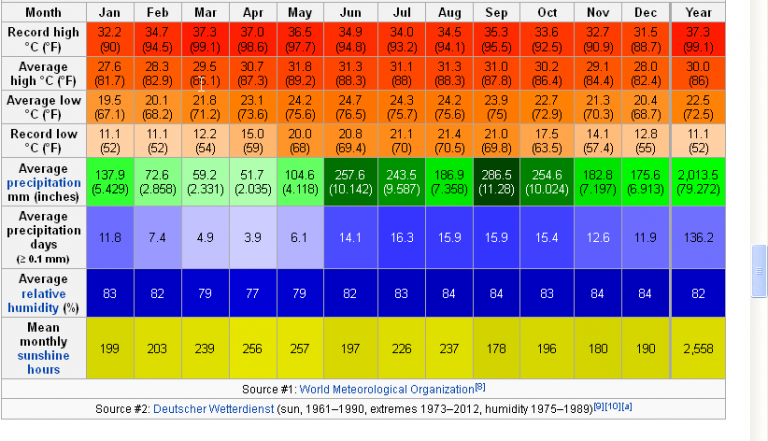TRAVEL TIPS & ARRIVAL INFORMATION
Please print these instructions and bring them with you for reference, when traveling to Belize.
Please take a moment to read the following instructions when planning your trip and arriving in Belize. You should find these not only informative, but helpful in answering most of your questions and concerns. Our desire is to assist you in avoiding some of the common mistakes we see others make. We have tried to include as much information as possible, so that decision making will be fairly easy and your trip to Belize fun and exciting. Here are some basic things you will need to know.
| travel_tips__planning-printable.pdf | |
| File Size: | 341 kb |
| File Type: | |
INTERNATIONAL AIRLINES SERVING BELIZE
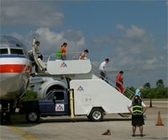
1. American Airlines – www.aa.com or 1-800-433-7000
2. Continental Airlines – www.continental.com or 1-800-231-0856
3. US Airways – www.usairways.com or 1-800-622-1015
4. Taca Airlines – www.taca.com or 1-800-400-8222
5. Delta Airlines – www.delta.com or 1-800-221-1212
6. Frontier Airlines – www.frontierairlines.com or 1-800-432-1359 (COMING SOON!)
2. Continental Airlines – www.continental.com or 1-800-231-0856
3. US Airways – www.usairways.com or 1-800-622-1015
4. Taca Airlines – www.taca.com or 1-800-400-8222
5. Delta Airlines – www.delta.com or 1-800-221-1212
6. Frontier Airlines – www.frontierairlines.com or 1-800-432-1359 (COMING SOON!)
CURRENCY
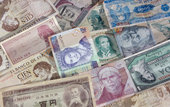
The Belize dollar is tied to the United States dollar and exchanged with most merchants at a fixed $2.00 (BZD) = $1.00 (USD). When exchanging money in a bank, Central Banking exchange rates will apply. Most places readily accept United States dollars and/or credit cards, so there is no need to exchange currency before arriving. However, your credit card company, may charge a slight exchange fee for processing your currency conversions.
Belizean banks cash travelers checks, give cash advances on Visa and Master cards and have wire transfer services. In addition, Belize has give commercial banks: Belize Bank, Alliance Bank of Belize, Atlantic Bank, First Caribbean International Bank, and Scotia Bank (Belize). ATM machines are located countrywide, but few accept debit cards from US banks.
Belizean banks cash travelers checks, give cash advances on Visa and Master cards and have wire transfer services. In addition, Belize has give commercial banks: Belize Bank, Alliance Bank of Belize, Atlantic Bank, First Caribbean International Bank, and Scotia Bank (Belize). ATM machines are located countrywide, but few accept debit cards from US banks.
ELECTRICITY
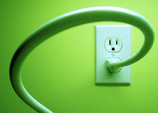
The electricity and electrical outlets in Belize are the same as the United States using 110 volts/60 cycles. Although in some of the more remote locations, diesel generators supply the sole means of electricity. A small surge suppressor is highly recommended for computers and other sensitive equipment. Visitors from countries such as Australia and Europe should bring power adapters.
LANGUAGE

English is the official language of Belize. Most Belizeans speak English, so you will not have any trouble communicating while in Belize. There exists in Belize, a dialect of English known as Belizean Creole, which is widely spoken throughout the country. Other languages spoken here in the country include: Carib, Mayan, and Spanish.
TIME ZONE
Belize observes the Central Standard Time (US and Canada); Mountain Standard during Daylight Savings time in the U.S. Daylight Savings is not observed in Belize.
HEALTH SERVICES

In Belize City you will have access to a well staffed hospital and several private doctors. On Ambergris Caye, you will find several doctors, who run their own private clinics.
If you're traveling to the Cayes to sun, swim, fish and dive, there are a few health precautions to take. Your food will be safe to eat, you'll have bottled beverages or treated water to drink, and your accommodations will probably be screened to keep out troublesome mosquitoes and other insects. Your biggest problem could be over exposure to the sun. Take it in small doses at first and remember, to wear a shirt when going snorkeling, so your back doesn't get burnt.
Potable water is available in most areas of Belize, but it is advisable to ask, and if in doubt, drink boiled or bottled water. Public water supplies in the major towns are general chlorinated. In some rural areas, water for domestic use is runoff from roofs, stored in cisterns or catchments, this may not always be safe to drink. An easy treatment is to add a couple of drops of laundry bleach (easily carried in a dropper bottle) to a quart of water. Shake and let stand a half-hour.
There are currently no epidemic diseases currently in Belize. No inoculations are required for entry, however, please consult with your local health department concerning the need for gamma-globulin or Havrix injections for hepatitis, anti-malaria tablets (if traveling into the rainforest) and an up-to-date tetnus are recommended.
If you're traveling to the Cayes to sun, swim, fish and dive, there are a few health precautions to take. Your food will be safe to eat, you'll have bottled beverages or treated water to drink, and your accommodations will probably be screened to keep out troublesome mosquitoes and other insects. Your biggest problem could be over exposure to the sun. Take it in small doses at first and remember, to wear a shirt when going snorkeling, so your back doesn't get burnt.
Potable water is available in most areas of Belize, but it is advisable to ask, and if in doubt, drink boiled or bottled water. Public water supplies in the major towns are general chlorinated. In some rural areas, water for domestic use is runoff from roofs, stored in cisterns or catchments, this may not always be safe to drink. An easy treatment is to add a couple of drops of laundry bleach (easily carried in a dropper bottle) to a quart of water. Shake and let stand a half-hour.
There are currently no epidemic diseases currently in Belize. No inoculations are required for entry, however, please consult with your local health department concerning the need for gamma-globulin or Havrix injections for hepatitis, anti-malaria tablets (if traveling into the rainforest) and an up-to-date tetnus are recommended.
CLIMATE & WEATHER
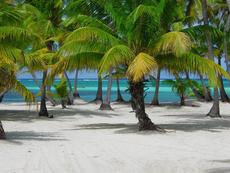
The climate in Belize is sub-tropical, tempered by trade winds (brisk breezes), from the Caribbean Sea. The annual temperature average a warm 80 degrees, and the humidity is nicely tempered by these sea breezes. Trade winds blow along the coast and Cayes most of the year keeping temperatures comfortable, even in the hottest months. November to February are traditionally the coolest months, with an average temperature of 75 F. May to August are generally the warmest months, with an average temperature of 81 F.
The winter months of the Northern Hemisphere (November to March), are what attract most visitors to Belize. Still, many visitors prefer to come during the quieter summer months from April to August. Both times of year have their own unique attractions, and the choice of when to visit, is totally up to you and your budget.
BEST TIME TO VISIT BELIZE
BELIZE IN WINTER
Belize has proven to be the choice location for those wanting to escape the harsh winter of the North. Besides the favorable temperature, Belize is also a favorite destination because of the following:
POINTS
BELIZE IN SUMMER
Belize is also the ideal place for those needing a summer break. Although Belize is a tropical country, the offshore breezes often provide cooler temperatures during the summer months than experienced in many cities to the north. During the summer months it is also true that:
POINTS
TEMPERATURES – The coolest time of the year in Belize, is from November to March. When the air is not heavy with humidity and cool gentle ocean breezes blanket the coast. You can expect temperatures to be (between November to March), to be in the high 70’s or 80’s, and lows generally in the 60’s (15 Centigrade). In the highlands, nighttime temperatures can even drop to near freezing. Average annual temperature at Belize City is about 80 degrees (27 Centigrade).
The warmest time of the year in Belize, is from March to September, and the air is often uncomfortably humid on the mainland, though sea breezes provide some relief along the coast. The temperature in Belize City is usually in 80’s and 90’s Fahrenheit (27 to 35 Centigrade), dropping to the 60’s or 70’s (18 to 24 Centigrade) at night.
The average high temperatures are as follows:
Jan.(80-70) – Feb.(80-71) – Mar.(83-84) – Apr.(85-76) – May(87-79) – Jun(87-79)
July(86-79) – Aug.(86-77) – Sep.(86-77) – Oct.(84-75) – Nov.(84-75) – Dec.(82-73)
WATER TEMPERATURES- The average water temperature is 83 degrees.
DRY SEASON- Dry season, also coincides with tourist or high season. The northern winter and spring. It coincides with the driest, coolest, most pleasant time in Belize, generally late November to April (and for divers, the waters offshore are clearest in March and April). This is when the island is at its driest & coolest.st coolest.
WET SEASON- Wet season, also coincides (or includes) hurricane season which lasts from early June to late October. This is the wettest time of year for Belize, generally speaking. For this reason, the island operates at a much slower pace, and tourists will often find discounted hotel and rooming accommodations.
But it hardly ever rains all day, because weather forms in a different way than in the temperate latitudes, where a mass of clouds could stay in one place for days. Most rains are daily revolving storms, which blow in from sea and blow away, leaving plenty of time on any day for hiking, fishing, and generally being outdoors.
Since the rainy season roughly coincides with summer in the north, it is therefore more lightly traveled. Most hotels lower their rates during this time, although the downside is that temperatures can get unpleasantly hot.
RAINFALL- Rainfall averages about 50 inches a year (1,250 mm) in the north of Belize, but increases sharply toward the South to about 170 inches annually. At Belize City, annual rainfall is about 74 inches (1,900 mm); at Cayo in the west, about 70 inches (1,800 mm); at Dangriga, about 95 inches (2,400 mm); at Punta Gorda, rainfall can total 160 inches (4,060 mm) in the year. Average humidity is 85 percent.
The winter months of the Northern Hemisphere (November to March), are what attract most visitors to Belize. Still, many visitors prefer to come during the quieter summer months from April to August. Both times of year have their own unique attractions, and the choice of when to visit, is totally up to you and your budget.
BEST TIME TO VISIT BELIZE
BELIZE IN WINTER
Belize has proven to be the choice location for those wanting to escape the harsh winter of the North. Besides the favorable temperature, Belize is also a favorite destination because of the following:
POINTS
- Belize is one of the most accessible of all tropical locations by geography and entry requirements.
- Belize is English speaking, making it easy for you to get around by yourself, with a group, or if you have special needs.
- This is the dry season in Belize which means that you should have no problem predicting bright, sunny skies during your vacation.
BELIZE IN SUMMER
Belize is also the ideal place for those needing a summer break. Although Belize is a tropical country, the offshore breezes often provide cooler temperatures during the summer months than experienced in many cities to the north. During the summer months it is also true that:
POINTS
- Belize receives fewer visitors, which gives you the opportunity to find the privacy and isolation you desire.
- Although it is the rainy season, showers are sporadic, and short, and followed by clear skies and sunshine.
- The best feature about spending a summer vacation in Belize is the savings. Rates start from around May 1st and remain significantly lower until November as compared to prices encountered during the winter months.
TEMPERATURES – The coolest time of the year in Belize, is from November to March. When the air is not heavy with humidity and cool gentle ocean breezes blanket the coast. You can expect temperatures to be (between November to March), to be in the high 70’s or 80’s, and lows generally in the 60’s (15 Centigrade). In the highlands, nighttime temperatures can even drop to near freezing. Average annual temperature at Belize City is about 80 degrees (27 Centigrade).
The warmest time of the year in Belize, is from March to September, and the air is often uncomfortably humid on the mainland, though sea breezes provide some relief along the coast. The temperature in Belize City is usually in 80’s and 90’s Fahrenheit (27 to 35 Centigrade), dropping to the 60’s or 70’s (18 to 24 Centigrade) at night.
The average high temperatures are as follows:
Jan.(80-70) – Feb.(80-71) – Mar.(83-84) – Apr.(85-76) – May(87-79) – Jun(87-79)
July(86-79) – Aug.(86-77) – Sep.(86-77) – Oct.(84-75) – Nov.(84-75) – Dec.(82-73)
WATER TEMPERATURES- The average water temperature is 83 degrees.
DRY SEASON- Dry season, also coincides with tourist or high season. The northern winter and spring. It coincides with the driest, coolest, most pleasant time in Belize, generally late November to April (and for divers, the waters offshore are clearest in March and April). This is when the island is at its driest & coolest.st coolest.
WET SEASON- Wet season, also coincides (or includes) hurricane season which lasts from early June to late October. This is the wettest time of year for Belize, generally speaking. For this reason, the island operates at a much slower pace, and tourists will often find discounted hotel and rooming accommodations.
But it hardly ever rains all day, because weather forms in a different way than in the temperate latitudes, where a mass of clouds could stay in one place for days. Most rains are daily revolving storms, which blow in from sea and blow away, leaving plenty of time on any day for hiking, fishing, and generally being outdoors.
Since the rainy season roughly coincides with summer in the north, it is therefore more lightly traveled. Most hotels lower their rates during this time, although the downside is that temperatures can get unpleasantly hot.
RAINFALL- Rainfall averages about 50 inches a year (1,250 mm) in the north of Belize, but increases sharply toward the South to about 170 inches annually. At Belize City, annual rainfall is about 74 inches (1,900 mm); at Cayo in the west, about 70 inches (1,800 mm); at Dangriga, about 95 inches (2,400 mm); at Punta Gorda, rainfall can total 160 inches (4,060 mm) in the year. Average humidity is 85 percent.
PACKING POINTERS
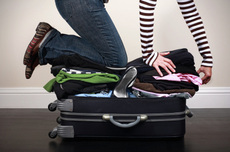
The slogan down here is, "No Shirt, No Shoes, No Problem." Bring twice the money and half the clothes, that's what they say, and I found it to be very true. With a tropical climate, you will find, that you are perfectly content and comfortable with a few simple lightweight pieces of clothing. Avoid polyester clothing (or any blends) it does not allow for air flow, and it can be hot and uncomfortable to wear.
CLOTHING - Climate is subtropical with annual average temperature of 80 degrees F. Dress accordingly. You'll mostly wear casual, tropical light weight clothing, jeans, shorts, and short-sleeved shirts or t-shirts. Pack a hat to protect your head. Include a sweater, lightweight waterproof jacket (for evenings on the beach or boat rides), tropical weight long-sleeved shirt and long pants (if going into the jungle). Be sure to take a change of clothing in your carry-on luggage, just in case your luggage is temporarily lost or misplaced in transit.EYE WEAR & CARE - Bright, sunny days require sunglasses, polarized is best. Lens lubricant may not be readily available. Take plenty of eye lubricant and wetting, soaking and cleaning solution. Lens wearers who also use eyeglasses, should plan on wearing glasses - rather than lenses - more often to give eyes a break.
FOOTWEAR - Tennis shoes, comfortable walking shoes, sandals. Bring hiking boots with good tread or tennis shoes and socks for jungle excursions.
SUNSCREEN, LOTIONS & REPELLENTS - It's necessary to protect your skin from the sun's ultraviolet rays. Pack plenty of sunscreen. Your favorite brand may not be readily available and an unfamiliar brand may cause a bad reaction. As bugs do live in jungles and in beach areas, take along insect repellent. If you tent to have a very sensitive skin, bring along some hydro-cortisone cream.
CAMERAS & FILM - Specific kinds of film, assuming you have not gone digital, may be hard to find. Bring extra batteries for your camera, along with plenty of film. Upscale gift shops sell pocket-type and underwater disposable cameras. TO be safe, bring your own.
DIVING, SNORKELING, FISHING, EQUIPMENT - Bring your own or leave it at home. It's your preference. If you have a prescription lens mask, be sure and bring that, along with your PADI certification card. Many divers will want to bring their own BC, regulator, wet suit, fins and mask. Leave your weights at home. They are normally included on your tour rates. Do not bring spear guns. They will be confiscated at the airport. Although most fishing trips include bait and tackle, serious fly fishing and spin casting anglers will probably want to bring their own gear.
BIRD WATCHING - A good pair of binoculars and guide book is invaluable to increase your birding enjoyment.
JUST IN CASE - Take a small flashlight or headlamp with extra batteries and water bottle for caving, hiking, and adventuring. Photocopy important documents such as passports, driver's license, credit cards, prescription medication forms, airline ticket and other important information. Bring an extra supply of prescription medications to carry along with you, especially when traveling to remote areas.
ESSENTIAL - Carry essential medications on board. Bring an extra supply of prescription medications to carry along with you daily, especially when traveling to remote areas. Bubble wrap is an excellent way to protect fragile gift items you want to take home, such as woodcarvings and other items.
CLOTHING - Climate is subtropical with annual average temperature of 80 degrees F. Dress accordingly. You'll mostly wear casual, tropical light weight clothing, jeans, shorts, and short-sleeved shirts or t-shirts. Pack a hat to protect your head. Include a sweater, lightweight waterproof jacket (for evenings on the beach or boat rides), tropical weight long-sleeved shirt and long pants (if going into the jungle). Be sure to take a change of clothing in your carry-on luggage, just in case your luggage is temporarily lost or misplaced in transit.EYE WEAR & CARE - Bright, sunny days require sunglasses, polarized is best. Lens lubricant may not be readily available. Take plenty of eye lubricant and wetting, soaking and cleaning solution. Lens wearers who also use eyeglasses, should plan on wearing glasses - rather than lenses - more often to give eyes a break.
FOOTWEAR - Tennis shoes, comfortable walking shoes, sandals. Bring hiking boots with good tread or tennis shoes and socks for jungle excursions.
SUNSCREEN, LOTIONS & REPELLENTS - It's necessary to protect your skin from the sun's ultraviolet rays. Pack plenty of sunscreen. Your favorite brand may not be readily available and an unfamiliar brand may cause a bad reaction. As bugs do live in jungles and in beach areas, take along insect repellent. If you tent to have a very sensitive skin, bring along some hydro-cortisone cream.
CAMERAS & FILM - Specific kinds of film, assuming you have not gone digital, may be hard to find. Bring extra batteries for your camera, along with plenty of film. Upscale gift shops sell pocket-type and underwater disposable cameras. TO be safe, bring your own.
DIVING, SNORKELING, FISHING, EQUIPMENT - Bring your own or leave it at home. It's your preference. If you have a prescription lens mask, be sure and bring that, along with your PADI certification card. Many divers will want to bring their own BC, regulator, wet suit, fins and mask. Leave your weights at home. They are normally included on your tour rates. Do not bring spear guns. They will be confiscated at the airport. Although most fishing trips include bait and tackle, serious fly fishing and spin casting anglers will probably want to bring their own gear.
BIRD WATCHING - A good pair of binoculars and guide book is invaluable to increase your birding enjoyment.
JUST IN CASE - Take a small flashlight or headlamp with extra batteries and water bottle for caving, hiking, and adventuring. Photocopy important documents such as passports, driver's license, credit cards, prescription medication forms, airline ticket and other important information. Bring an extra supply of prescription medications to carry along with you, especially when traveling to remote areas.
ESSENTIAL - Carry essential medications on board. Bring an extra supply of prescription medications to carry along with you daily, especially when traveling to remote areas. Bubble wrap is an excellent way to protect fragile gift items you want to take home, such as woodcarvings and other items.
- Bring along any prescription medicines, that you or your kids may need while in Belize.
- Be sure to bring, use and re-apply high protection sun-block generously. It is hard to keep kids out of the sun and even on an overcast day one can get badly burnt, potentially ruining your vacation.
- Although life jackets are a requirement for all boat operators, smaller size are not common, so bring along life jackets for babies and small children. Kids can also wear these when playing in the pool.
- Communicate with guest services about the interests your family has in additional activities while in Belize. There is an assortment of tour packages available to choose from.
- Stock up on high-energy snacks like granola bars and bottled water in cities or major towns before going on tours so that your children always have something available to eat and drink.
- Pack water toys, stuffed animals and books to keep your children busy especially on the journey to Belize.
- You will find a selection of disposable diapers, cereals and formulas in town, however, if you have a preferred brand, be sure to bring.
WHAT TO PACK
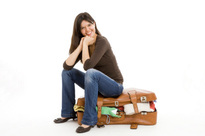
WHAT TO PACK FOR A ONE WEEK STAY
Most of what you will be wearing, will be casual. For evening attire, even the nicest restaurants on the island accept casual attire. Clothing selections should be items that are lightweight and loose, cotton fitting attire. Belize can be hot, so prepare adequately for the sun. As a basic rule, if you cannot get along without it, bring a spare. This applies for contact lenses and glasses, sunglasses, flashlight and any personal medications. * Passports - driver's license, credit cards, money, traveler's checks * Airline tickets * Emergency contact information * 2 Swimming suits * 3 Pairs shorts/capris * Long pants - Long Shirts * Comfortable Evening Attire (dresses, pants & shirts) * Sandals (1 pair, comfortable) * Tennis shoes 2/ 2-3 sets of socks (1 pair, comfortable) * Swim Shoes (esp. recommended for elderly, we have lots of tile down here and tile is slippery when wet) * Lightweight jacket for walking on the beach and while riding in boats. * Lightweight rain jacket w/ hood (f you are coming during the raining season) * Dark sunglasses * Sunscreen lotion (plenty) * Hat (wide brimmed) * Camera * Small Flash Light (for possible power outages). * Insect repellent * Binoculars * Small dry pack w/ bars & favorite snacks * Health kit (special medicines, lotions, personal sanitary items) * Baby items (diapers, formulas, bottles, blanket, stroller, diaper bag, wet ones) * Reading material (books, magazines, maps, guidebooks, these instructions) * Prescription glasses & prescription diving mask (if applicable) * Diving & snorkeling equipment (f you desire) * Dive certification card If you are coming to dive or snorkel - If you've diving or fishing you can bring your own equipment if you wish (mask, snorkel, fins). Diving and snorkeling gear is available for rent at the various dive shops. When you book a fishing trip with a guide, the fishing gear is usually included. If you are coming to go on some of the tours - If you plan to take a jungle day tour to the mainland, you will need to bring hiking boots (or tennis shoes), loose cotton pants, dark sunglasses, a wide brimmed hat, insect repellent and your camera.
|
DIVING, SNORKELING, FISHING EQUIPMENT
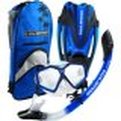
DIVING & SNORKELING EQUIPMENT
Many divers will want to bring their own BC, regulator, wet suit, fins and mask. Especially if your mask has been designed for corrective vision. Also, don't forget your dive certification card. You will need to present this to the dive operator when participating in any diving activity. Please note, that most dive shops, rent all the equipment you're going to need, so if you want, make it easy and leave it at home. It's your preference. Leave your weights at home. They are normally included on your tour rates. SPECIAL NOTE: Do not bring spear guns. They will be confiscated at the airport. FISHING EQUIPMENT Although most fishing trips include bait and tackle, serious fly fishing and spin casting anglers will probably want to bring their own gear. THINGS TO AVOID
* Remember no liquids in your carry on luggage.
* Avoid polyester clothing. * Leave your fancy/expensive jewelry & watches (save it for city life) * Do not bring diving weights or spear guns * No fresh fruit or meat (especially pork) can come into the country * Bring more than $10,000. USD in currency, you need to declare it * No ammunition or firearms * No illegal drugs | ||||||
FAMILY HELPFUL TIPS
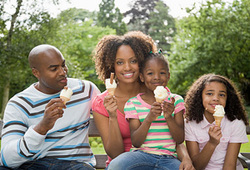
PRESCRIPTION MEDICINE: Bring along any prescription medicines, that you and your kids think you might need while in Belize. The island does have a number of pharmacy's, although you'll find that many of the prescription bottle instructions are all in Spanish.
SUN BLOCK FOR CHILDREN: Be sure to bring adequate sunblock for your children. Be sure to use and reapply high protection sun-block generously. It is hard to keep kids out of the sun, even on an overcast day, one can get badly burnt.
KIDS LIFE JACKETS: Although life jackets are a requirement for all boat operators, smaller sizes are not common, so we recommend bringing along life jackets for babies and small children. Also, swim vests for small children as a general rule, are not found for sale in the various local stores. Plan on bringing your child's swim vest along, if you plan on using the pool or swimming in the beach front areas.
HIGH ENERGY SNACKS: You can buy most snack here on the island, such as bottled water, juice, granola bars, crackers, cookies, chips, raisins, nuts and trail mix. The island does not for the most part, carry dried fruits or protein bars if that is your preference.
WATER TOYS, STUFFED ANIMALS: We recommend bringing any small activities items for your kids, such as Nintendos, small portable DVD players, crayons, coloring books, small toys, puzzles, or books to occupy your children. Traveling can be very stressful for them, and you often find yourself spending a considerable amount of time waiting, with idle time on your hands. The restaurants down here, do not hand out crayons or coloring books for small children while you wait for your meal. So we recommend bringing them along with you. If your child has a special stuffed toy that they are attached to, put it in the suitcase.
DISPOSABLE DIAPERS & SWIM DIAPERS: Diapers on the island in general can be very expensive and I have yet to find a store that consistently carries swim diapers. I would recommend bringing what you think you'll need for your trip. Then you can use the extra luggage space for souvenirs for the trip back home.
Should you have any additional questions, please don't hesitate to contact us.
SUN BLOCK FOR CHILDREN: Be sure to bring adequate sunblock for your children. Be sure to use and reapply high protection sun-block generously. It is hard to keep kids out of the sun, even on an overcast day, one can get badly burnt.
KIDS LIFE JACKETS: Although life jackets are a requirement for all boat operators, smaller sizes are not common, so we recommend bringing along life jackets for babies and small children. Also, swim vests for small children as a general rule, are not found for sale in the various local stores. Plan on bringing your child's swim vest along, if you plan on using the pool or swimming in the beach front areas.
HIGH ENERGY SNACKS: You can buy most snack here on the island, such as bottled water, juice, granola bars, crackers, cookies, chips, raisins, nuts and trail mix. The island does not for the most part, carry dried fruits or protein bars if that is your preference.
WATER TOYS, STUFFED ANIMALS: We recommend bringing any small activities items for your kids, such as Nintendos, small portable DVD players, crayons, coloring books, small toys, puzzles, or books to occupy your children. Traveling can be very stressful for them, and you often find yourself spending a considerable amount of time waiting, with idle time on your hands. The restaurants down here, do not hand out crayons or coloring books for small children while you wait for your meal. So we recommend bringing them along with you. If your child has a special stuffed toy that they are attached to, put it in the suitcase.
DISPOSABLE DIAPERS & SWIM DIAPERS: Diapers on the island in general can be very expensive and I have yet to find a store that consistently carries swim diapers. I would recommend bringing what you think you'll need for your trip. Then you can use the extra luggage space for souvenirs for the trip back home.
Should you have any additional questions, please don't hesitate to contact us.
GETTING TO BELIZE
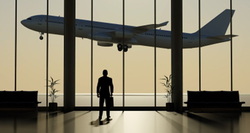
GETTING TO BELIZE – Given our proximity to North and South America, as well as the Caribbean, getting to Belize is easy. Less than two hours by air from any major US southern gateway (Charlotte, Dallas, Houston, and Miami), Belize currently hosts five major airlines, that serve Belize from the United States and neighboring Central American countries. These carriers are: Delta, American, Continental, US Air, and Grupo TACA. These major airlines have daily direct flights from US and Central American gateways, all coordinated with European connections.
There is no direct flight from Mexico, but there are flights to Cancun with a 6 hour bus trip to the Belize Northern Border, down to the town of Corozal, then you can catch a commuter plan (Tropic Air) to the island.
The Philip Goldson International Airport (BZ) is the main port of entry into Belize. From Belize City, you have one of two choices to get from the Belize mainland to the island of Ambergris Caye.
Most visitors reach the island by either taking a boat or an airplane across lower Chetumal Bay from Belize City. Locals refer to passenger boats as “skiffs” and their smaller canoe-like vessels are “dories”. The crossing takes about 1-1/4 hours by skiff (or) less than 15 minutes by a 15 passenger commuter aircraft.
There is no direct flight from Mexico, but there are flights to Cancun with a 6 hour bus trip to the Belize Northern Border, down to the town of Corozal, then you can catch a commuter plan (Tropic Air) to the island.
The Philip Goldson International Airport (BZ) is the main port of entry into Belize. From Belize City, you have one of two choices to get from the Belize mainland to the island of Ambergris Caye.
Most visitors reach the island by either taking a boat or an airplane across lower Chetumal Bay from Belize City. Locals refer to passenger boats as “skiffs” and their smaller canoe-like vessels are “dories”. The crossing takes about 1-1/4 hours by skiff (or) less than 15 minutes by a 15 passenger commuter aircraft.
ENTRANCE REQUIREMENTS
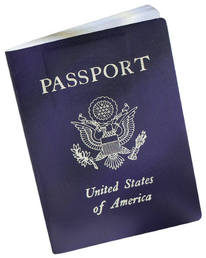
All visitors need a passport and onward or round trip ticket in order to enter Belize. A visitor’s permit will be stamped into your passport at your point of entry, for a stay up to 30 days, unless you are a Belize resident or citizen. This permit allows you to stay in the country for 30 days.
If your passport expires in 6 months, you need to renew it prior to leaving your home country. Citizens of some other countries are also required to obtain a visa.
A visa is required to be issued before arrival for citizens of China, Columbia, Cuba, India, Libya, Pakistan, Peru, South Africa, and Taiwan. For non-US citizens, please contact the nearest consulate or embassy of the country to which you are traveling to determine your entry/visa requirements. Contact the Immigration and Nationality Service, Belmopan, Belize for issuance.
No visas are required for citizens of the United States, Canada, the United Kingdom, British Commonwealth nations, Mexico, Central or South America, the European community, or U.S. dependencies. In general, cruise ship passengers are exempt from entry requirements. Due to recent changes in U.S. regulations, American traveling by airplane are required to present their passport at U.S. airports in order to re-enter the United States.
If your visit exceeds 1 month, you will need to obtain an extended stay permit from the Immigration Authorities in Belize. AIDS test required for those staying more than 3 months; US test accepted if within 3 months of visit. For longer stays and other information, contact the Embassy of Belize, 2535 Massachusetts Ave., NW, Washington, DC 20008 (202-332-9636) or the Belize Mission in New York at (212-599-0233). For information regarding visas in Belize please call 011-501-822-2423. The immigration office for San Pedro, is located above the Scotia bank building across from Tropic Air.
If your passport expires in 6 months, you need to renew it prior to leaving your home country. Citizens of some other countries are also required to obtain a visa.
A visa is required to be issued before arrival for citizens of China, Columbia, Cuba, India, Libya, Pakistan, Peru, South Africa, and Taiwan. For non-US citizens, please contact the nearest consulate or embassy of the country to which you are traveling to determine your entry/visa requirements. Contact the Immigration and Nationality Service, Belmopan, Belize for issuance.
No visas are required for citizens of the United States, Canada, the United Kingdom, British Commonwealth nations, Mexico, Central or South America, the European community, or U.S. dependencies. In general, cruise ship passengers are exempt from entry requirements. Due to recent changes in U.S. regulations, American traveling by airplane are required to present their passport at U.S. airports in order to re-enter the United States.
If your visit exceeds 1 month, you will need to obtain an extended stay permit from the Immigration Authorities in Belize. AIDS test required for those staying more than 3 months; US test accepted if within 3 months of visit. For longer stays and other information, contact the Embassy of Belize, 2535 Massachusetts Ave., NW, Washington, DC 20008 (202-332-9636) or the Belize Mission in New York at (212-599-0233). For information regarding visas in Belize please call 011-501-822-2423. The immigration office for San Pedro, is located above the Scotia bank building across from Tropic Air.
DEPARTURE TAX (Visitor Fees)
The Belize Government currently charges a departure tax to Belizean residents in the amount of $35.00 bzd and for non-Belizean's residents $39.25 USD per person (payable only in USD currency). SPECIAL NOTE: Make sure you reserve enough cash from your vacation, to take care of these fees (at the airport), when it comes time to return home.
BELIZE INTERNATIONAL AIRPORT - Arriving to Belize
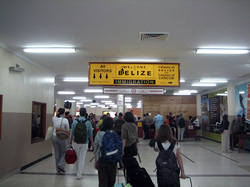
Once you have arrived to the Belize International airport, you will be asked to get off the airplane. Airport personnel will direct you to the customs area. Here you will stand in line to have your passport cleared. Bathroom facilities are available upon entering the building.
PASSPORT CLEARANCE
LINE TO THE LEFT: For tourists wishing to vacation in Belize.
LINE TO THE RIGHT: For Belizean citizens.
Once your passport has been cleared, you will be asked to retrieve your luggage. After you retrieve your luggage, you will head towards a custom officer. You will be asked to get in one of two lines. For most tourists traveling to Belize (with nothing to declare), you will want to get in the line on the right.
CUSTOMS DECLARATION
Visitors may bring in personal effects, such as wearing apparel, jewelry, binoculars, cameras and laptops. Each person is allowed to import one carton (200 only) of cigarettes and one bottle of alcoholic beverage, duty free.
LINE TO THE RIGHT - ZERO CUSTOM DECLARATION: For most tourists traveling to Belize, who are not claiming anything, you will need to be in the line that merges to the right.
LINE TO THE LEFT - CUSTOM DECLARATIONS: If those who are claiming items on your custom declaration slip, you will need to be in the line that merges to the left.
Baggage Porter's will be available to assist you in taking your baggage to the counter to connect with your commuter flight to the island. Porters are not employed by the airport and rely on tips to support themselves.
SPECIAL NOTE: If a baggage porter takes your bags and you do not object, you will be asked to pay a tip for this service. If you wish to carry your baggage yourself, you will need to state your desire to the baggage porter immediately.
PORTER TIPPING
Should you desire the services of a baggage porter, the customary tip fee is $2.00 bzd (or $1.00 US) for each bag handled by your porter. Please bear in mind, that many of these porter's rely on tips as their sole means of income.
PASSPORT CLEARANCE
LINE TO THE LEFT: For tourists wishing to vacation in Belize.
LINE TO THE RIGHT: For Belizean citizens.
Once your passport has been cleared, you will be asked to retrieve your luggage. After you retrieve your luggage, you will head towards a custom officer. You will be asked to get in one of two lines. For most tourists traveling to Belize (with nothing to declare), you will want to get in the line on the right.
CUSTOMS DECLARATION
Visitors may bring in personal effects, such as wearing apparel, jewelry, binoculars, cameras and laptops. Each person is allowed to import one carton (200 only) of cigarettes and one bottle of alcoholic beverage, duty free.
LINE TO THE RIGHT - ZERO CUSTOM DECLARATION: For most tourists traveling to Belize, who are not claiming anything, you will need to be in the line that merges to the right.
LINE TO THE LEFT - CUSTOM DECLARATIONS: If those who are claiming items on your custom declaration slip, you will need to be in the line that merges to the left.
Baggage Porter's will be available to assist you in taking your baggage to the counter to connect with your commuter flight to the island. Porters are not employed by the airport and rely on tips to support themselves.
SPECIAL NOTE: If a baggage porter takes your bags and you do not object, you will be asked to pay a tip for this service. If you wish to carry your baggage yourself, you will need to state your desire to the baggage porter immediately.
PORTER TIPPING
Should you desire the services of a baggage porter, the customary tip fee is $2.00 bzd (or $1.00 US) for each bag handled by your porter. Please bear in mind, that many of these porter's rely on tips as their sole means of income.
COMPLETING ENTRANCE DOCUMENTS
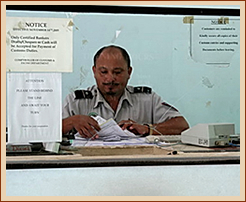
About 45 minutes prior to landing, airline personnel will hand you two documents required to enter Belize. One, is a custom declaration form. The second is an arrival record. Both of these forms will need to be completed, as they will be reviewed by an Immigration Officer inside the airport.
1. CUSTOM DECLARATION FORM - (For head of households ONLY). Only one form needs to be filled out per family. On this form, you will be asked for the following information: Your name, birth date, number of people traveling with you, your home address, passport information, countries you have recently visited, flight or vessel number and the purpose of your visit. Additionally you will be asked if you are bringing into the country, any of the following: fruits, vegetables, plants, seeds, food, insects, meats, animals, wildlife products, disease agents, cell cultures, snails, $10,000.00 US or more of cash, commercial merchandise, firearms, etc. The purpose of this form it for the government to regulate and control what can and cannot be brought into the country and also provides a means by which to collect a customs fee on anything being brought into Belize.
2. WELCOME TO BELIZE - ARRIVAL RECORD FORM - (One form per person). On the this form, you will be asked to complete the following: Name, sex, nationality, place of birth, date of birth, passport information, date of issuance, place of issuance, permanent address, occupation, intended stay address in Belize. The purpose of this form is for the Belize Tourism Board to tract and monitor where tourist revenue is being generated from. This helps the government to know where best to spend their marketing dollars.
ARRIVING AT PHILIP S. GOLDSON (BELIZE) INTERNATIONAL AIRPORT - Upon arriving at Belize International Airport, you will be asked to exit the plane via an exterior staircase. Airport personnel will direct you to immigration (your point of entry into Belize). Bathrooms are located immediately inside the lobby area and are available for you to use upon arrival (should you need them).
You will be asked to form one of two lines. If you are a visitor coming to Belize, you will need to get in the lines to the left. Lines to the right are reserved for "Belizean Residents & Citizens". Here you will need to have ready your entrance documentation, your passport and the forms you filled out on the plane, ready for examination. Once cleared, you will be asked to go to baggage claim.
1. CUSTOM DECLARATION FORM - (For head of households ONLY). Only one form needs to be filled out per family. On this form, you will be asked for the following information: Your name, birth date, number of people traveling with you, your home address, passport information, countries you have recently visited, flight or vessel number and the purpose of your visit. Additionally you will be asked if you are bringing into the country, any of the following: fruits, vegetables, plants, seeds, food, insects, meats, animals, wildlife products, disease agents, cell cultures, snails, $10,000.00 US or more of cash, commercial merchandise, firearms, etc. The purpose of this form it for the government to regulate and control what can and cannot be brought into the country and also provides a means by which to collect a customs fee on anything being brought into Belize.
2. WELCOME TO BELIZE - ARRIVAL RECORD FORM - (One form per person). On the this form, you will be asked to complete the following: Name, sex, nationality, place of birth, date of birth, passport information, date of issuance, place of issuance, permanent address, occupation, intended stay address in Belize. The purpose of this form is for the Belize Tourism Board to tract and monitor where tourist revenue is being generated from. This helps the government to know where best to spend their marketing dollars.
ARRIVING AT PHILIP S. GOLDSON (BELIZE) INTERNATIONAL AIRPORT - Upon arriving at Belize International Airport, you will be asked to exit the plane via an exterior staircase. Airport personnel will direct you to immigration (your point of entry into Belize). Bathrooms are located immediately inside the lobby area and are available for you to use upon arrival (should you need them).
You will be asked to form one of two lines. If you are a visitor coming to Belize, you will need to get in the lines to the left. Lines to the right are reserved for "Belizean Residents & Citizens". Here you will need to have ready your entrance documentation, your passport and the forms you filled out on the plane, ready for examination. Once cleared, you will be asked to go to baggage claim.
BAGGAGE CLAIM
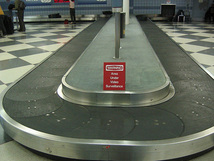
Feel free to take a baggage cart (free of charge) when you arrive to the baggage terminal. As your bags come through on the carousal, retrieve them and place them on the baggage cart. You will then need to go through customs. There are two lines.
LINE TO THE RIGHT: For visitors with a return trip ticket home, claiming zero declarations, you will need to get into the line that forms to the right.
LINE TO THE LEFT: For visitors (claiming custom declarations), or Belizean residents & citizens, you will need to get in the line that forms to the left.
LINE TO THE RIGHT: For visitors with a return trip ticket home, claiming zero declarations, you will need to get into the line that forms to the right.
LINE TO THE LEFT: For visitors (claiming custom declarations), or Belizean residents & citizens, you will need to get in the line that forms to the left.
ENTERING BELIZE CUSTOMS
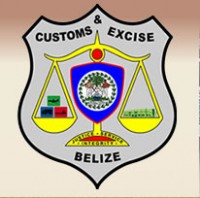
Belize customs does allow visitors to bring anything they will reasonably need, including fishing and diving equipment, to include apparel, jewelry, binoculars, cameras, laptops, including fishing and diving equipment. Each person is allowed twenty ounces of imperial liquor, 200 cigarettes, and one bottle of perfume may be entered duty-free. Don't bring any firearms for hunting unless you've arranged for for clearance in advance. Pets can be brought to Belize only with a written permission obtained in advanced from the Ministry of Agriculture. Proof of inoculation against rabies and a veterinarian's certificate of good health, are required.
If you are declaring items on your entrance forms, please bear in mind, that the customary fee (duty charged) is usually 35-37% of the value you claim on your entrance paperwork. If custom officials dispute your valuation, they will look up in their books what the government has indicated as a value on this item and you will be charged accordingly. Most visitors coming to Belize for vacation, will not have items to declare.
Pets can be brought into Belize only with written permission obtained in advance from the Ministry of Agriculture. Proof of inoculation against rabies, and a veterinarian's certification of good health, are required.
If you are declaring items on your entrance forms, please bear in mind, that the customary fee (duty charged) is usually 35-37% of the value you claim on your entrance paperwork. If custom officials dispute your valuation, they will look up in their books what the government has indicated as a value on this item and you will be charged accordingly. Most visitors coming to Belize for vacation, will not have items to declare.
Pets can be brought into Belize only with written permission obtained in advance from the Ministry of Agriculture. Proof of inoculation against rabies, and a veterinarian's certification of good health, are required.
VISITORS TO BELIZE
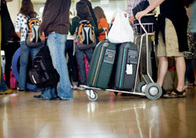
Are permitted to stay in Belize for up to 30 days without cost .
After 30 days, you will need to obtain a visa extension, they are routinely granted at Immigration offices located in San Pedro on Ambergris Caye, Punta Gorda, Belmopan, Orange Walk, and Belize City at a cost of $25.00 USD per person, per month (after thirty days).
After 30 days, you will need to obtain a visa extension, they are routinely granted at Immigration offices located in San Pedro on Ambergris Caye, Punta Gorda, Belmopan, Orange Walk, and Belize City at a cost of $25.00 USD per person, per month (after thirty days).
GETTING TO & FROM THE BELIZE INTERNATIONAL AIRPORT
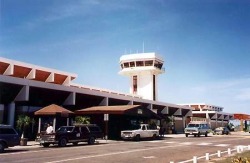
Maya Island Air and Tropic Air are the local commuter airlines. Also check info if you have an early morning flight out or you plan to overnight en route somewhere else, the Global Village Hotel (actually it's more of a motel than a hotel) is a good new choice near the International airport. The 40 rooms are sparkling clean. This Chinese-owned place is located just south of the turnoff to the international airport, and the hotel has a free shuttle to and from the airport.
GETTING FROM BELIZE CITY INTERNATIONAL AIRPORT TO SAN PEDRO, AMBERGRIS CAYE ISLAND
You have two choices:
1. Water Taxi - a 1 hour, 20 minute water taxi for approx. $33.00 BZD round-trip, (2 bag minimum) or
2. Charter Aircraft - is a 15 minute charter flight for approx. $109.00 BZD round trip, (multiple bags allowed)
Rates are for reference use only. Please ask Black Orchid Management, for current pricing. NOTE: (Note prices may be subject to change without notice).
GETTING FROM BELIZE CITY INTERNATIONAL AIRPORT TO SAN PEDRO, AMBERGRIS CAYE ISLAND
You have two choices:
1. Water Taxi - a 1 hour, 20 minute water taxi for approx. $33.00 BZD round-trip, (2 bag minimum) or
2. Charter Aircraft - is a 15 minute charter flight for approx. $109.00 BZD round trip, (multiple bags allowed)
Rates are for reference use only. Please ask Black Orchid Management, for current pricing. NOTE: (Note prices may be subject to change without notice).
CHARTER FLIGHTS - Connecting from Belize Airport to Ambergris Caye (San Pedro)
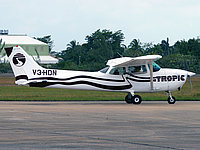
Once you have cleared customs, you will need to go to connect with your island air commuter flight. Baggage Porters will be on hand to assist you in getting your luggage to the local commuter flight check in counters. Please keep in mind, if you allow a porter to handle your luggage, there is a customary tip fee of $2.00 BZD or $1.00 US per bag. Porters can be fairly bold, if you have not tipped them correctly. If you are coming into Belize with a lot of luggage, I suggest using a porter. If you are comfortable handling and carrying your own luggage, simply tell the porter that you do not need his assistance.
To assure availability, the chartered flight must be scheduled prior to departing for your trip. This charter can be arranged through our office. When you are ready, we will be happy to telephone and make this reservation for you.
To assure availability, the chartered flight must be scheduled prior to departing for your trip. This charter can be arranged through our office. When you are ready, we will be happy to telephone and make this reservation for you.
TAXI'S - In Belize

Taxi's are generally easily available, and they are recognizable by their "green license" plates. Although, there are no meters on taxis in Belize, drivers tend to generally all charge fairly standard rates. To avoid any problem or disputes, always verify the fare cost, prior to getting in your taxi.
Never get into a taxi that does not have a green license plate and never share a taxi with strangers. A taxi fare from Belize International airport to Belize City tends to be around $35.00 USD.
Never get into a taxi that does not have a green license plate and never share a taxi with strangers. A taxi fare from Belize International airport to Belize City tends to be around $35.00 USD.
BELIZE INTERNATIONAL AIRPORT - Leaving Belize
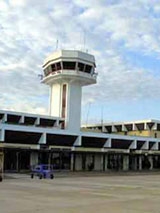
Once you arrive at the Belize International airport, you will be asked to exist the commuter island aircraft. Airport personnel will direct you to the baggage claim area. There you will retrieve your baggage, by producing your baggage claim stub given you at the ticket counter. Baggage Porter's will be there to assist you in taking your luggage from the luggage claim area, (to the check in counter), at your connecting international flight home. Please note, that porters are not airport employees, and rely on tips to support themselves and their families.
If a baggage porter takes your bags and you do not object, you will be asked to pay a tip for this service. If you wish to carry your baggage yourself, you will need to state your desire to the baggage porter immediately. Should you desire the services of a baggage porter, the customary tip or fee for this service, is $2.00 bzd (or $1.00 US) for each bag handled by your porter. Please bear in mind, that many of these porter's rely on tips as their sole means of income.
If a baggage porter takes your bags and you do not object, you will be asked to pay a tip for this service. If you wish to carry your baggage yourself, you will need to state your desire to the baggage porter immediately. Should you desire the services of a baggage porter, the customary tip or fee for this service, is $2.00 bzd (or $1.00 US) for each bag handled by your porter. Please bear in mind, that many of these porter's rely on tips as their sole means of income.
EXIT REQUIREMENTS - DEPARTURE TAX (Visitors Fee)
The Belize Government currently charges a departure tax to Belizean residents in the amount of $35.00 bzd and for non-Belizean's residents $39.25 USD per person (payable only in USD currency). SPECIAL NOTE: Make sure you reserve enough cash from your vacation, to take care of these fees (at the airport), when it comes time to return home.
SUGGESTIONS
We love suggestions. If there is anything not included in this web-site, that you think needs to be addressed or added, just let us know. You can contact us at:
EMAIL: [email protected]
EMAIL: [email protected]
